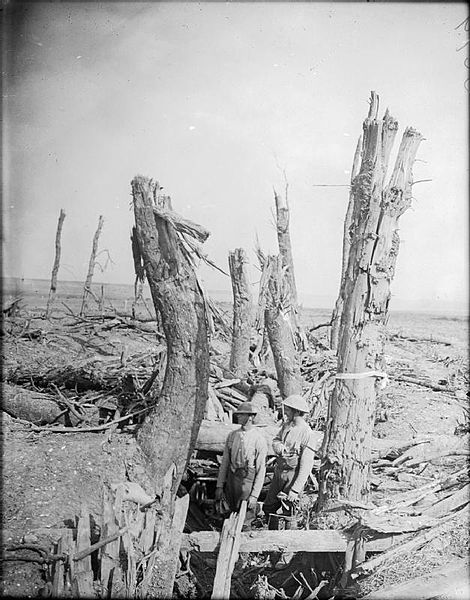The Liverpool Press Guard was a Rifle Volunteer Corps raised in the city of Liverpool in Lancashire, North West England, in 1861. Initially drawn from the newspaper and printing trades, it later recruited more widely in the Everton and Ormskirk areas. In 1881 it became a battalion of the King's. A detachment served in the Second Boer War, and two battalions saw action during World War I distinguishing themselves at the Battle of Loos, on the Somme, at Ypres and at Cambrai. It fought in the Battles of the Hindenburg Line in 1918 and was the first unit to liberate Lille in October 1918. The battalion was amalgamated into the Royal Engineers after the war.
The former Everton Road Drill Hall, in three converted houses dating from 1830.
Cap badge of the King's (Liverpool Regiment) from 1908.
Frank Ramsay, who commanded 1/9th King's, 1915–16, pictured as a Brigadier-General in 1917.
British soldiers in wrecked German trench at Ginchy, 1916.
2nd Infantry Brigade (United Kingdom)
The 2nd Infantry Brigade was a regional brigade of the British Army, active since before the First World War. It was the regional formation of the Army in the South East of England–the Brigade commanded and administered soldiers throughout Kent, Surrey and Sussex–but also Brunei. In December 2014 the Brigade merged with 145 (South) Brigade to form Headquarters 11th Infantry Brigade and Headquarters South East.
Prince Arthur, the Duke of Connaught, inspecting troops of the 1st Battalion, Northamptonshire Regiment, 2nd Brigade. Near Bruay, 1 July 1918.
Troops from the 1st Battalion, Loyal Regiment (North Lancashire) leap from their Bren gun carriers while training at Bourghelles, 21 March 1940.






